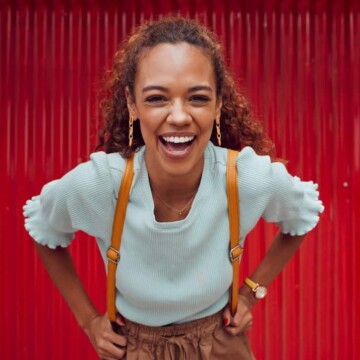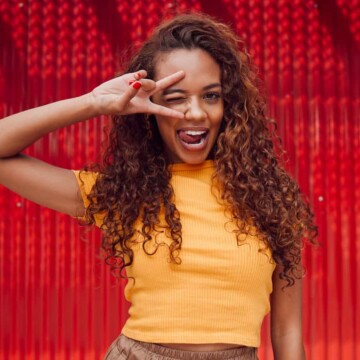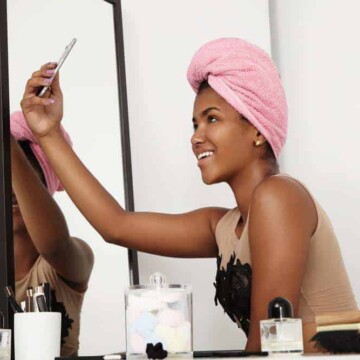
Are you thinking about switching up your hair color? Whether your goal is to try a whole new hair hue or tweak your existing color to better fit you, the hair color wheel is sure to come in handy.
If the concept of the color wheel throws you for a loop, don’t worry.
In this article, we’ll tell you everything you need to know about it, and we won’t leave anything out. By the end, you’ll know the science behind hair color, and you’ll be able to manipulate different colors to get the result you want. Let’s get right into it!
Table of Contents
- 1 What Is the Hair Color Wheel?
- 2 Categorizing Hair Colors Using the Color Wheel
- 3 The Hair Color Wheel and Color Correction
- 4 The Hair Color Wheel and Color Correction
- 5 Complementary Colors on the Color Wheel
- 6 How to Use the Hair Color Wheel to Choose the Right Hair Color
- 7 The Hair Color Wheel is a Tool for Everyone
- 8 Neutralizing Unwanted Hair Colors
- 9 How to Tone Your Hair Using the Hair Color Wheel
- 9.1 1. Identify Your Current Hair Color
- 9.2 2. Find the Opposite Color on the Wheel
- 9.3 3. Choose the Right Toner
- 9.4 4. Strand Test
- 9.5 5. Apply the Toner
- 9.6 6. Maintain Your Hair
- 9.7 How Do You Read a Color Wheel for Hair?
- 9.8 How Does the Hair Color Wheel Work?
- 9.9 How Do You Dye Your Hair With a Color Wheel?
- 9.10 How Do You Know What Hair Color Compliments You?
- 9.11 What Hair Color Cancels Out Red?
- 9.12 Related Articles
- 10 Do You Need a Hair Color Wheel?
What Is the Hair Color Wheel?
A hair color wheel is a tool that shows the relationship between different hair colors. It's a circular diagram that visually represents how colors relate to one another.
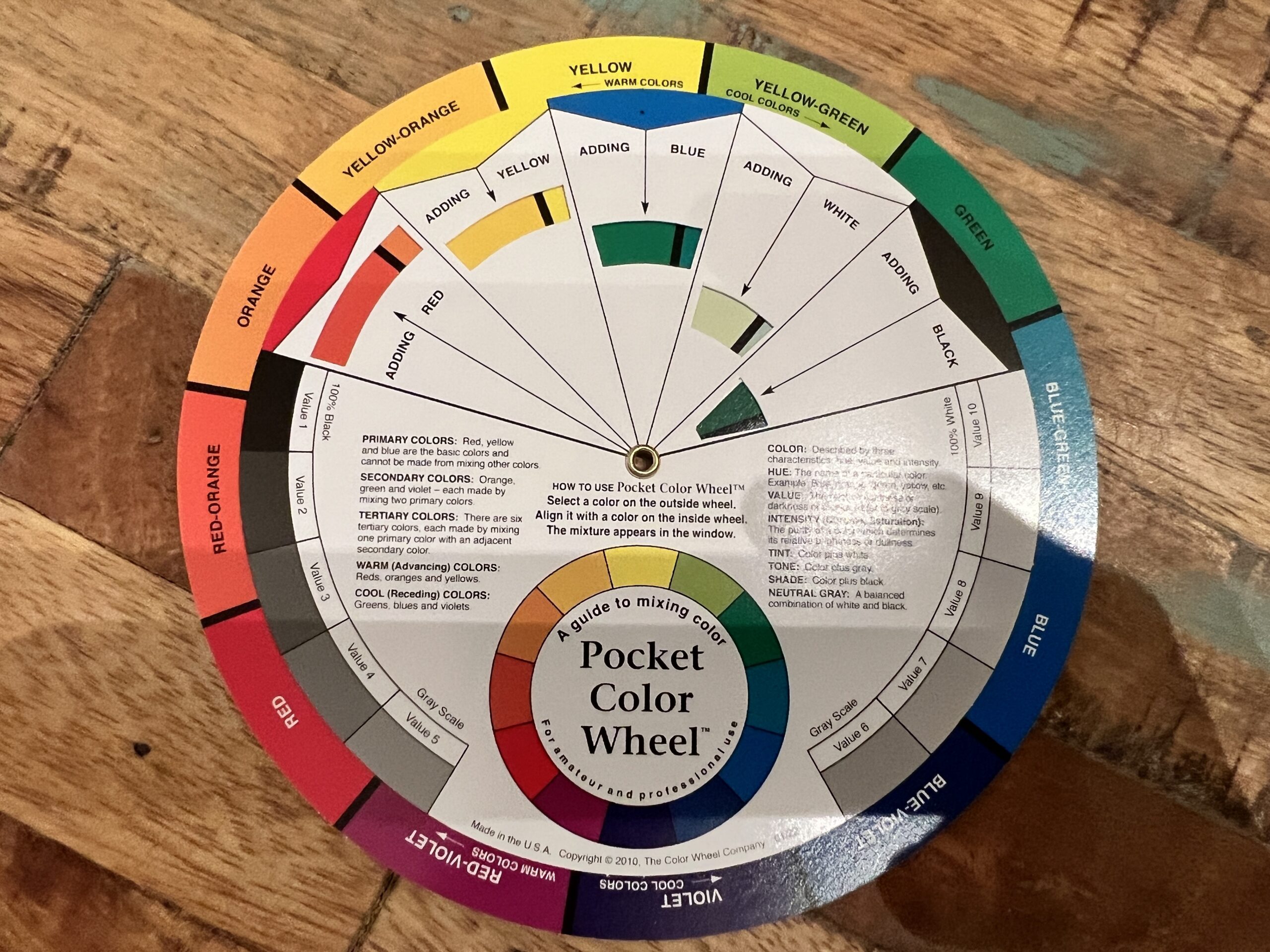
The Colors on the Hair Color Wheel
At the most basic level, the hair color wheel includes three primary colors: red, yellow, and blue. These are the colors that can't be made by mixing other colors together.
Next up, we have the secondary colors, which are a result of mixing two primary colors. For example, red and yellow give us orange, yellow and blue create green, and blue and red result in purple.
Then, we have the tertiary colors, which are made by combining a primary color with a secondary color. These include red-orange, yellow-green, and blue-violet, among others.
For the purposes of this article, the hair color wheel and the color wheel referenced in the art discipline are the same.
The Connection Between the Color Wheel and Hair Color
Wondering how all of this applies to hair color? Well, when we talk about hair color, we're usually referring to shades that range from black to blonde and everything in between. Each of these colors can be categorized on the color wheel.
For instance, black and dark brown hair can fall under the "blue" category due to its cool undertones, while blonde hair might fall under "yellow" due to its warm undertones. Furthermore, the hair color wheel is not just about identifying colors.
It's also an invaluable tool when it comes to color correction.
If you've ever ended up with a hair color you didn't want, the hair color wheel can help you figure out how to neutralize or balance it out by using the color that sits directly opposite on the wheel. We’ll get into that later on in this article.
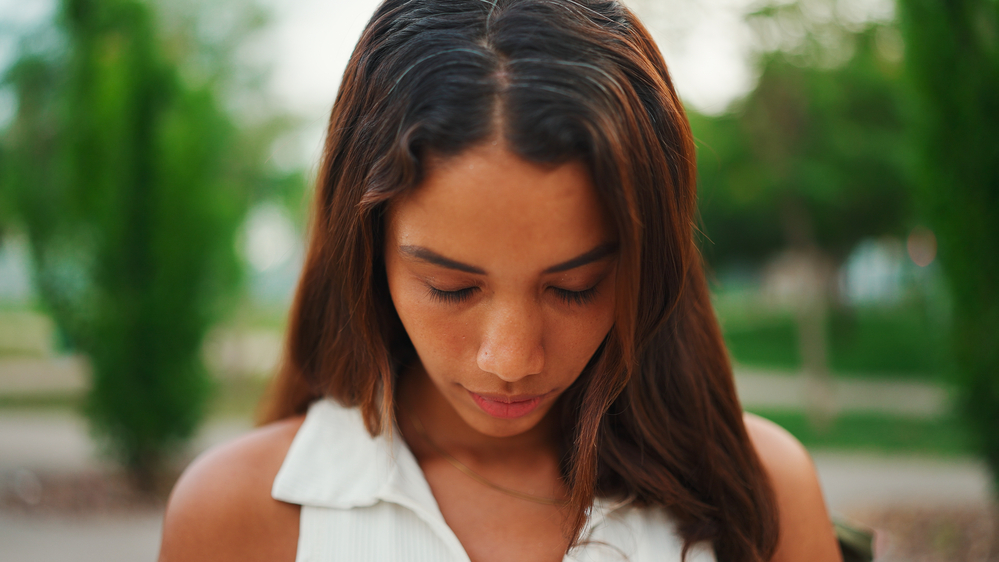
Categorizing Hair Colors Using the Color Wheel
To get more into the nitty-gritty of categorizing colors on the hair color wheel, keep reading. Here’s how to connect the hair color wheel with real-life hair colors.
Black and Dark Brown Hair
At the darker end of the spectrum, we have black and dark brown hair. These colors often have cool undertones, which means they lean more toward the blue and violet sections of the hair color wheel.
However, it's important to note that these undertones may not always be visible to the naked eye. They usually become more apparent under certain lighting conditions or when the hair is lifted to a lighter color.
Also, it’s important to know that dark brown hair can also have warm undertones.

Medium Brown to Light Brown Hair
As we move towards medium and light brown hair, we start to see more visible undertones. Medium brown hair can have a variety of undertones, including cool (blue-violet), neutral (a balance between warm and cool), or warm (red-orange).
Light brown hair, on the other hand, usually has warm undertones that lean towards orange on the color wheel.
Red Hair
Next up is red hair, which naturally falls into the red sector on the color wheel. However, there's a wide range of shades within "red hair," from deep auburn to bright copper, and each has its own place on the color wheel.
Deeper auburn shades lean more towards violet-red, while bright copper shades are closer to orange-red on the color wheel.
Blonde Hair
Finally, we have blonde hair at the lighter end of the spectrum. Blonde hair often has yellow undertones, placing it in the yellow area of the hair color wheel.
However, there are a variety of blonde shades, each with different undertones. For example, ash blonde hair has cool, greenish undertones, while golden blonde hair has warm, orangish undertones.
The Hair Color Wheel and Color Correction
With that understanding, let's dive into color correction in hair coloring, the role of the hair color wheel, and the concept of complementary colors.
You’ll need this information should you ever be in a position where you don’t love your current hair color and want to make a change to it.

Color Correction in Hair Coloring and Its Importance
Color correction is a term used in hair coloring to refer to the process of adjusting, changing, or neutralizing hair color that didn't turn out as planned or has faded over time. It can be as simple as toning down brassy blondes or as complex as restoring natural color after multiple hair color treatments.
Color correction is incredibly important because hair color mishaps can happen to anyone, whether you're a novice experimenting with box dye at home or a seasoned professional dealing with a challenging hair situation.
Misjudgments in color choice, incorrect application, or even using a product that wasn't right for your hair type can lead to undesired results. That's where color correction comes in – it's a saving grace when things don't go according to plan.
The Hair Color Wheel and Color Correction
The hair color wheel plays an essential role in color correction. It's like a map that guides you to the correct colors to use when correcting a hair color mistake. The idea is to use colors that sit opposite each other on the wheel. These are known as "complementary colors," and they neutralize or cancel each other out when mixed.
Practical Color Correction Examples
Let's say you wanted to go blonde, but your hair turned out too yellow or brassy. On the hair color wheel, violet is the complementary color to yellow. In this case, a violet-toned hair product like a purple shampoo or conditioner would be used to neutralize the yellow tones, bringing your hair to a more natural, cooler blonde.
In another scenario, let's imagine you're a brunette who tried to go lighter, but your hair turned out with unwanted reddish or orange tones. Blue is the complementary color to orange on the hair color wheel. Therefore, you'd use a blue-toned shampoo or a toner to neutralize the orange and bring your hair to a more neutral brown.
Complementary Colors on the Color Wheel
The concept of complementary colors is fundamental in color correction. As we've discussed, these are pairs of colors that sit opposite each other on the color wheel. When mixed, they effectively neutralize each other. In hair coloring, this means they can cancel out undesired tones.
Not only are complementary colors used to correct hair color mishaps, but they're also used proactively by professional colorists to prevent unwanted tones from appearing in the first place.
For instance, if a colorist knows that a particular hair color is prone to pulling too much yellow, they might use a color with a slight violet undertone to balance it out from the get-go.
How to Use the Hair Color Wheel to Choose the Right Hair Color
The color wheel can be an invaluable tool in choosing the perfect hair color to complement your skin's undertone. If you're not familiar with the concept, your skin's undertone is the subtle hue underneath the surface of your skin, and it can be cool, warm, or neutral.
Cool Undertones
Cool undertones have a bluish or pinkish hue. If you have cool undertones, hair colors that fall on the cool side of the color wheel will likely complement your skin.
This includes colors with blue or violet undertones, such as platinum blonde, ash brown, or burgundy. These cool colors can help balance out the coolness of your skin and make your overall look harmonious.
Warm Undertones
If your skin has a warm undertone, it means it has a yellow, peachy, or golden hue. Hair colors on the warm side of the color wheel would suit you best.
This includes colors with yellow, orange, or red undertones, like golden blonde, coppery red, or a warm chestnut brown. These warm colors can bring out the warmth in your skin and make your complexion look radiant.
Neutral Undertones
If you have a neutral undertone, you're one of the lucky ones! Your skin is a balance of warm and cool, which means you can pull off a wide range of hair colors from both sides of the color wheel. Whether you go for a cool ash blonde or a warm copper red, your neutral skin tone can harmonize with various hair colors.
Testing Hair Colors
If you're unsure about what hair color will suit your skin undertone, consider doing a strand test. This involves applying a small amount of hair dye to a discrete section of your hair and seeing how it looks against your skin.
This can give you a sense of how the color will look before you commit to dyeing your entire head of hair. You can also get your hands on a wig in your desired color and wear it for a while to see if you like it.

The Hair Color Wheel is a Tool for Everyone
The hair color wheel isn't just a tool for professional colorists—it's a resource that anyone can use, no matter their level of experience with hair coloring. Whether you're a seasoned stylist or a brave DIYer looking to switch up your look at home, the hair color wheel offers a myriad of benefits.
Benefits for Professional Hair Colorists
For professionals, the hair color wheel serves as a fundamental guide to achieving desired hair colors and correcting color mishaps. It provides a visual reference for understanding how different colors interact, enabling hair colorists to predict how one color will affect another.
For instance, if a client's hair is too yellow, a colorist can refer to the color wheel and plan to use a purple-based toner to combat that. It's a valuable tool that helps professionals deliver the best results to their clients.
Benefits for at-Home Hair Colorists
If you're someone who likes to experiment with hair color at home, the hair color wheel can be your guide to success. It can help you choose the right hair color for your skin tone, avoid common hair coloring mistakes, and maintain your color-treated hair.
For example, if you're thinking about going from brown to blonde, understanding the hair color wheel can help you anticipate the warm orange or yellow tones that might emerge during the process.
Armed with this knowledge, you can choose the right toner to neutralize these warm tones and achieve your desired blonde shade.
Empowerment Through Understanding
Understanding the hair color wheel can empower you to make more informed decisions about your hair color. It can give you the confidence to try new colors, fix any mishaps, and maintain your vibrant color for longer. It's like having a roadmap for your hair coloring journey—you'll know what to expect, what to avoid, and how to change course if needed.

Neutralizing Unwanted Hair Colors
The hair color wheel is a handy tool for understanding how different colors can neutralize each other. Here's what you need to know about canceling out specific hair colors:
Red
To neutralize red tones in your hair, you would want to use a hair color that is green-based or has green undertones. This is because green sits directly opposite to red on the color wheel, and colors that are opposite each other on the wheel are known to cancel each other out.
Yellow
To cancel out yellow tones in your hair, you would want to use a hair color or toner that is purple-based or has purple undertones. Purple is directly opposite to yellow on the color wheel, so it neutralizes yellow tones when used correctly.
This is why you often see blonde people using purple shampoos or conditioners – it's to keep their blonde color from turning brassy or yellow.
Orange
To neutralize orange tones in your hair, a hair color or toner with blue undertones would be the best choice. Blue is directly opposite to orange on the color wheel, making it effective at counteracting orange tones.
Green
To counteract green tones in your hair, you would want to use a hair color or toner that is red-based or has red undertones. Red sits directly opposite to green on the color wheel, making it perfect for neutralizing green tones.

How to Tone Your Hair Using the Hair Color Wheel
Toning your hair using the hair color wheel involves understanding which colors neutralize each other. Here's a simple step-by-step guide to help you tone your hair using the hair color wheel:
1. Identify Your Current Hair Color
The first step is to identify the unwanted color or tones in your hair. Is it too yellow? Too orange? Maybe it has some red or green undertones you're not fond of. This unwanted color is what you'll need to neutralize through toning.
2. Find the Opposite Color on the Wheel
Once you've identified the unwanted color, find it on the hair color wheel. Then, look directly across to the opposite side of the wheel. This is the color that can neutralize your unwanted tones.
- If your hair is too yellow, you'll need a purple-based toner.
- If your hair is too orange, you'll need a blue-based toner.
- If your hair is too red, you'll need a green-based toner.
- If your hair is too green, you'll need a red-based toner.
3. Choose the Right Toner
Now that you know what color you need, it's time to choose the right toner. Many hair care brands offer toners, and they often label them by their color action, like "purple for brassy or yellow tones."
4. Strand Test
Before applying the toner to your entire head, do a strand test by applying the toner to a small, discreet section of your hair. This will let you see how your hair responds to the toner and if you're happy with the result.
5. Apply the Toner
If you're happy with the results of the strand test, you can apply the toner to your entire head. Follow the instructions on the packaging for the best results.
6. Maintain Your Hair
After you've achieved your desired tone, maintain it by using color-protecting hair products and minimizing your hair's exposure to factors that can fade color, like sun and hot styling tools.
Remember, it's always a good idea to consult a professional if you're unsure about anything. They can provide personalized advice based on your hair's specific needs.

How Do You Read a Color Wheel for Hair?
Reading a hair color wheel involves understanding the relationships and interactions among different colors. The color wheel comprises primary, secondary, and tertiary colors. The primary colors, red, yellow, and blue, form the wheel's core. Mixing these creates secondary colors - orange, green, and violet.
The tertiary colors, such as red-orange, yellow-green, and blue-violet, result from combining primary and secondary colors. When considering hair color, matching it with the corresponding color on the wheel is important, allowing you to understand its undertones and how it might interact with other colors.
How Does the Hair Color Wheel Work?
The hair color wheel works on the principle of complementary colors. Complementary colors are those which are directly opposite each other on the wheel. These pairs can neutralize or cancel each other out when mixed.
For example, violet is the complementary color to yellow and can neutralize yellow tones in the hair, bringing your hair to a more natural, cooler blonde. Understanding these relationships is essential for achieving desired hair colors and correcting color mishaps.
How Do You Dye Your Hair With a Color Wheel?
Dyeing your hair with a color wheel involves a process that starts with identifying your current hair color or the unwanted color tones in your hair. Once this is done, find that color on the wheel and identify its complementary color (the one directly opposite).
The chosen complementary color will help neutralize the unwanted tones. For example, if your hair turned out too orange after a dye job, you would need a blue-based toner (since blue is the opposite of orange on the wheel) to achieve a more neutral brown color.
How Do You Know What Hair Color Compliments You?
Knowing what hair color complements you involves understanding your skin's undertones. If your skin has cool undertones (bluish or pinkish hue), hair colors on the cool side of the color wheel, like platinum blonde, ash brown, or burgundy, will likely complement your skin.
On the other hand, if your skin has a warm undertone (yellow, peachy, or golden hue), hair colors on the warm side of the color wheel, like golden blonde, coppery red, or a warm chestnut brown, would suit you best. For those with neutral undertones, a broad range of hair colors from both sides of the wheel could work well.
What Hair Color Cancels Out Red?
To cancel out red tones in your hair, you would want to use a hair color that is green-based or has green undertones. This is because green sits directly opposite to red on the color wheel.
Colors that are opposite each other on the wheel, known as complementary colors, neutralize or cancel each other out when mixed. Therefore, using a green-based toner or hair color can effectively neutralize unwanted red tones.
Do You Need a Hair Color Wheel?
After reading about all of its uses, you might be wondering whether you need a hair color wheel. The answer is “not always.” While you don't absolutely need a hair color wheel to dye your hair, it can be an extremely useful tool, especially if you're aiming for a specific color or trying to correct a color mishap.
Still, the knowledge you gain from understanding the wheel can turn out to be very helpful. So, there you have it - everything you need to know about the hair color wheel. We hope you found all the information you were looking for, and we wish you the best with your hair color endeavors!


